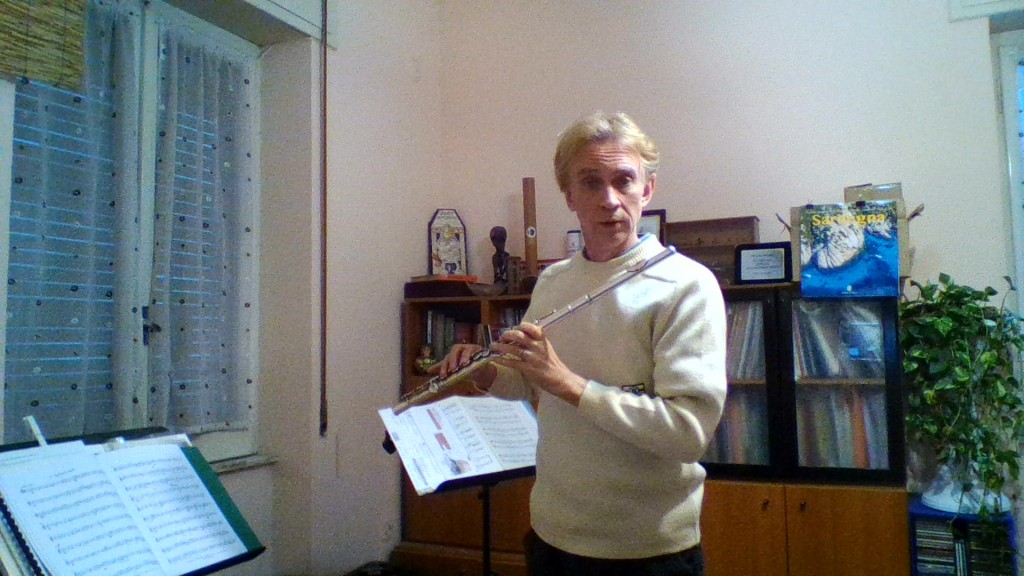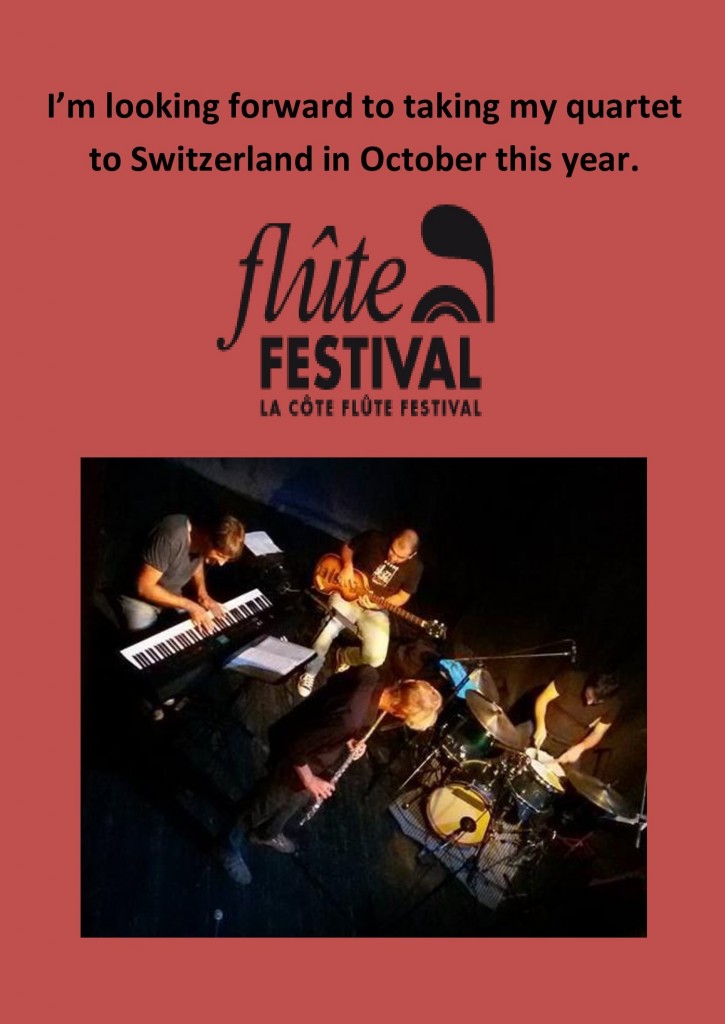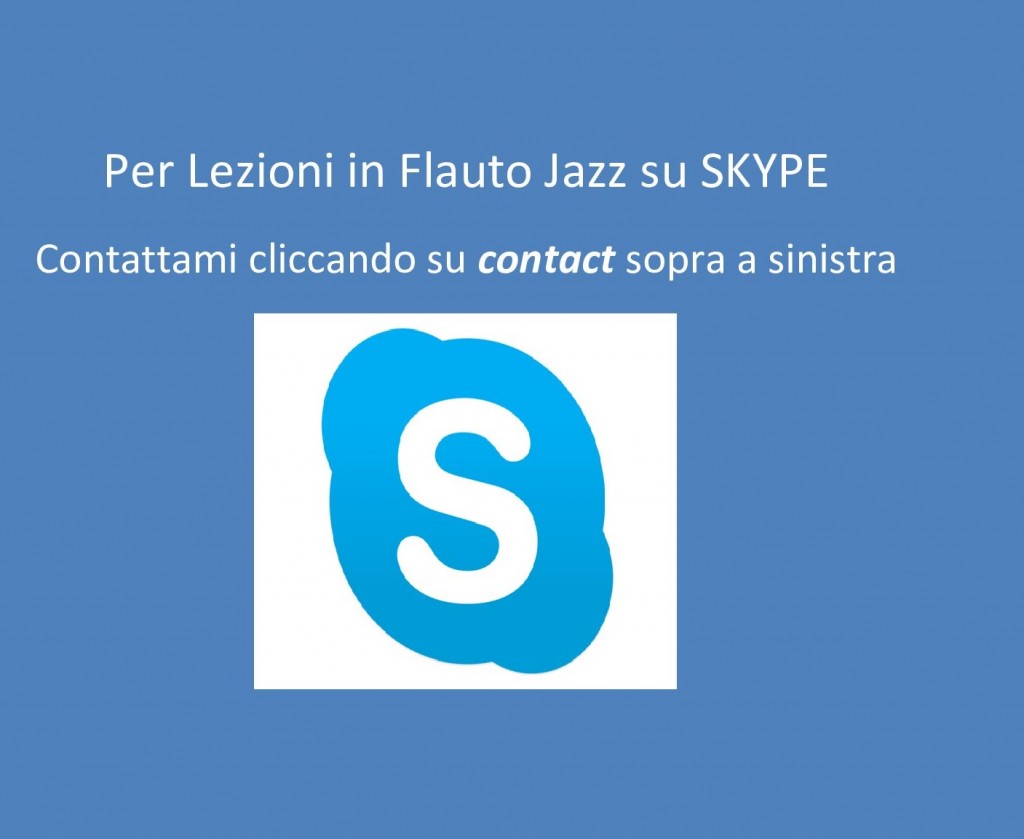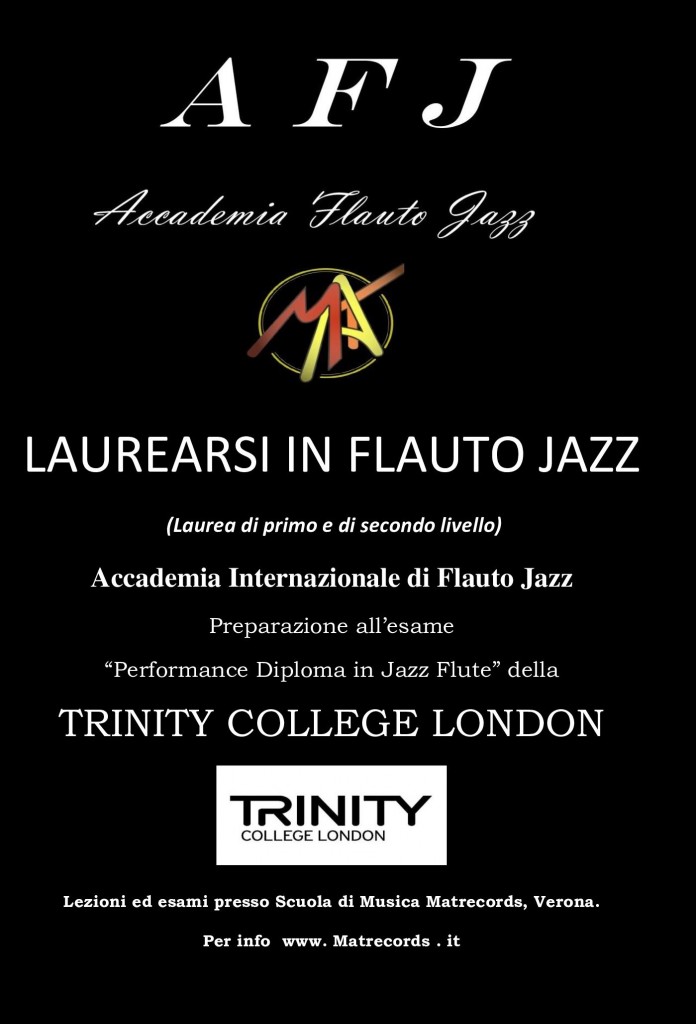Uncategorized: blues flute diploma in flauto jazz ethno-jazz flauto jazz flute fables FMR Records funky funky jazz funky jazz geoff warren groove improvised jazz jazz education jazz flute Jazz flute music jazz flute summer school jazz flutemusic LAUREA IN FLAUTO JAZZ MatRecords Online lessons skype jazz flute lessons Trevor Taylor TUTU Records yamaha
by admin
leave a comment
Uncategorized: blues flute British Flute Society diploma in flauto jazz ethno-jazz flauto jazz flute fables FMR Records free sheet music downloads funky funky jazz geoff warren Geoff Warren Quartet groove indo jazz jazz education jazz flute jazz flute summer school jazz flutemusic La Côte Flûte Festival LAUREA IN FLAUTO JAZZ Marco Di Marzio Online lessons raffaele pallozzi skype jazz flute lessons TUTU Records walter caratelli yamaha
by admin
leave a comment
Uncategorized: afro jazz blues flute diploma in flauto jazz ethno-jazz flauto jazz flute fables FMR Records funky funky funky jazz funky jazz groove improvised jazz education jazz flute Jazz flute music jazz flute summer school jazz flutemusic LAUREA IN FLAUTO JAZZ MatRecords Online lessons skype jazz flute lessons yamaha
by admin
leave a comment
Uncategorized: diploma in flauto jazz ethno-jazz flauto jazz flute fables FMR Records Forton Music funky funky jazz funky jazz geoff warren groove improvised indo jazz jazz jazz education jazz flute Jazz flute music jazz flute summer school jazz flutemusic LAUREA IN FLAUTO JAZZ MatRecords Online lessons skype jazz flute lessons TUTU Records yamaha
by admin
leave a comment
Uncategorized: accordo di settima maggiore diploma in flauto jazz ethno-jazz flauto jazz flute fables FMR Records funky funky funky jazz funky jazz geoff warren groove jazz jazz flute Jazz flute music jazz flute summer school jazz flutemusic LAUREA IN FLAUTO JAZZ lezioni online MatRecords Online lessons skype jazz flute lessons TUTU Records yamaha
by admin
leave a comment
MOMENTI DI PANICO – L’accordo di settima maggiore – maj7. (In English below)
L’accordo settima maggiore- Maj7 è un suono abbastanza stabile che comunica spesso un momento di arrivo o di risoluzione, piuttosto di avere un “tiro” verso un’altra armonia.
Quindi si trovo frequentemente come accordo finale di una sequenza e noi ci possiamo trovare con il compito di mettere un “fill” o piccola cadenza sopra.
In ogni caso ricordiamoci che la fondamentale verrà suonato dal basso e la nota che più definisce l’accordo , la settima maggiore, sarà probabilmente più in alto, forse anche in cima al voicing. Se noi solisti con uno strumento acuto e leggero come il flauto raddoppiamo la fondamentale l’effetto può essere debole e anche poco gradevole, quindi ci serva una soluzione che ci dia materiale motivico che sta bene con l’accordo senza utilizzare la nota fondamentale, che fatalmente sarà la prima nota che leggiamo quando suoniamo dallo spartito.
Conosci le pentatoniche?
Quelle maggiori?
Quelle minori?
SE NO, LE DEVI IMPARARE!
Quando vedi un accordo Maj7 usa la pentatonica maggiore che parte dalla quinta dell’accordo, o (stesse note) la pentatonica minore che parte dalla terza dell’accordo.
Es. Cmaj7 – usa la pentatonica di Sol maggiore (SOL è la quinta dell’accordo Cmaj7) o la pentatonica di MI minore (Mi è la terza dell’accordo Cmaj7)
Vorresti sapere perchè?
Vorresti sapere d più?
Contattami per lezioni flauto jazz su Skype.
Uncategorized: Accademia Flauto jazz diploma in flauto jazz ethno-jazz flute fables FMR Records funky funky jazz funky jazz geoff warren groove improvised jazz jazz education jazz flute Jazz flute music jazz flute summer school jazz flutemusic LAUREA IN FLAUTO JAZZ MatRecords Online lessons skype jazz flute lessons TUTU Records yamaha
by admin
leave a comment
PANIC MOMENTS – The Major Seventh Chord
The major seventh chord is a fairly stable sound, that often communicates arrival/resolution rather than having a “pull” towards another harmony.
So it is quite often the final chord in a sequence, and we can find ourselves with the job of perhaps adding a flourish or fill over it.
In any case the tricky thing about this chord is that the bass will play the root note and what defines the chord (the major seventh) will be higher up in the voicing, often right at the top.
If we, as a soloist playing a light, treble clef instrument like the flute, double the root note, the effect is limp, even unpleasant, so we need a solution that will give us motivic material that fits within the chord, without using that root note, which is fatally, the first note you read when playing through the music.
Do you know your pentatonics ?
Major pentatonics ?
Minor pentatonics ?
IF YOU DON’T, YOU SHOULD.
When you see a maj7 chord use the major pentatonic that starts out from the fifth of that chord.
Or (same notes), use the minor pentatonic that starts out from the third of the chord.
e.g. Cmaj7 – use a G major pentatonic (G is the fifth of the Cmaj7 chord)
or E minor pentatonic (E is the third of the C maj7 chord)
Want to know why?
Want to know more?
Contact me for skype jazz flute lessons.
Uncategorized: Accademia Flauto jazz blues flute diploma in flauto jazz ethno-jazz flauto jazz FMR Records free sheet music downloads funky funky funky jazz funky jazz geoff warren improvised jazz jazz education jazz flute Jazz flute music jazz flute summer school jazz flutemusic LAUREA IN FLAUTO JAZZ MatRecords Online lessons skype jazz flute lessons TUTU Records yamaha
by admin
leave a comment
Uncategorized: blues flute diploma in flauto jazz ethno-jazz flauto jazz FMR Records Forton Music funky funky jazz funky jazz geoff warren groove jazz jazz education jazz flute Jazz flute music jazz flute summer school jazz flutemusic LAUREA IN FLAUTO JAZZ MatRecords nu jazz online jazz flute lessons Online lessons skype jazz flute lessons TUTU Records yamaha
by admin
leave a comment
Uncategorized: diploma in flauto jazz ethno-jazz flauto jazz flute fables FMR Records free sheet music downloads funky funky funky jazz funky jazz geoff warren groove improvised jazz jazz education jazz flute Jazz flute music jazz flute summer school jazz flutemusic LAUREA IN FLAUTO JAZZ MatRecords Online lessons skype jazz flute lessons Skype lessons TUTU Records yamaha
by admin
leave a comment
UK quartet gigs May 2016
I’m looking forward to coming back to the Railway in Southend with my UK quartet in May this year. Trevor Taylor on drums, Mike King on keyboard and Ben Hearn on bass.
Uncategorized: diploma in flauto jazz ethno-jazz flauto jazz flute fables FMR Records Forton Music free sheet music downloads funky funky funky jazz funky jazz geoff warren groove improvised jazz jazz education jazz flute Jazz flute music jazz flute summer school jazz flutemusic LAUREA IN FLAUTO JAZZ MatRecords Online lessons skype jazz flute lessons Skype lessons TUTU Records yamaha
by admin
leave a comment
ONLINE JAZZ FLUTE LESSONS
Over the years I have developed a personal, interactive style of jazz flute teaching based very much on interplay. I have, I feel, managed to adapt this method to the computer age and offer individual lessons on line using Skype as a platform.
I am bilingual – English/Italian and am happy to teach in either language. I guarantee my commitment and availability once we get started. The results will be very much up to you: I can show you the way, point out things you might not have noticed, suggest exercises, revolutionise (hopefully) your approach to daily study, but it’s up to you if you want to apply yourself or not.
I am used to working with musicians from all backgrounds. Quite often I find myself telling classical players to loosen up and jazzers to play it more cleanly. My philosophy is that any technique you use, any sound you make, has to be because that’s what you want at that time, not because it’s the only one you’ve got.
I have a classical background but right out of university I was on the road as a jazzman. I have worked in commercial music, salsa bands, and jazz bands from swing to modern, from jazz fusion to ethnojazz.
During our lessons we will talk, of course, about theory, but I will leave it up to you to fill in the gaps in your knowledge on your own time (I will be happy to provide specific theory sheets when these are needed.) I will provide you with some simple backing tracks to play over, and ask you to send me recorded versions of how you are getting along. Some of the material will be famous standards ,and some will be made-to-measure jazz educational pieces by myself.
Using Skype we can do lessons wherever you happen to be, just as long as you have:
Skype
Webcam , mike and speakers on your computer
High speed internet
For more details please get in touch by clicking on contact above on the left.







